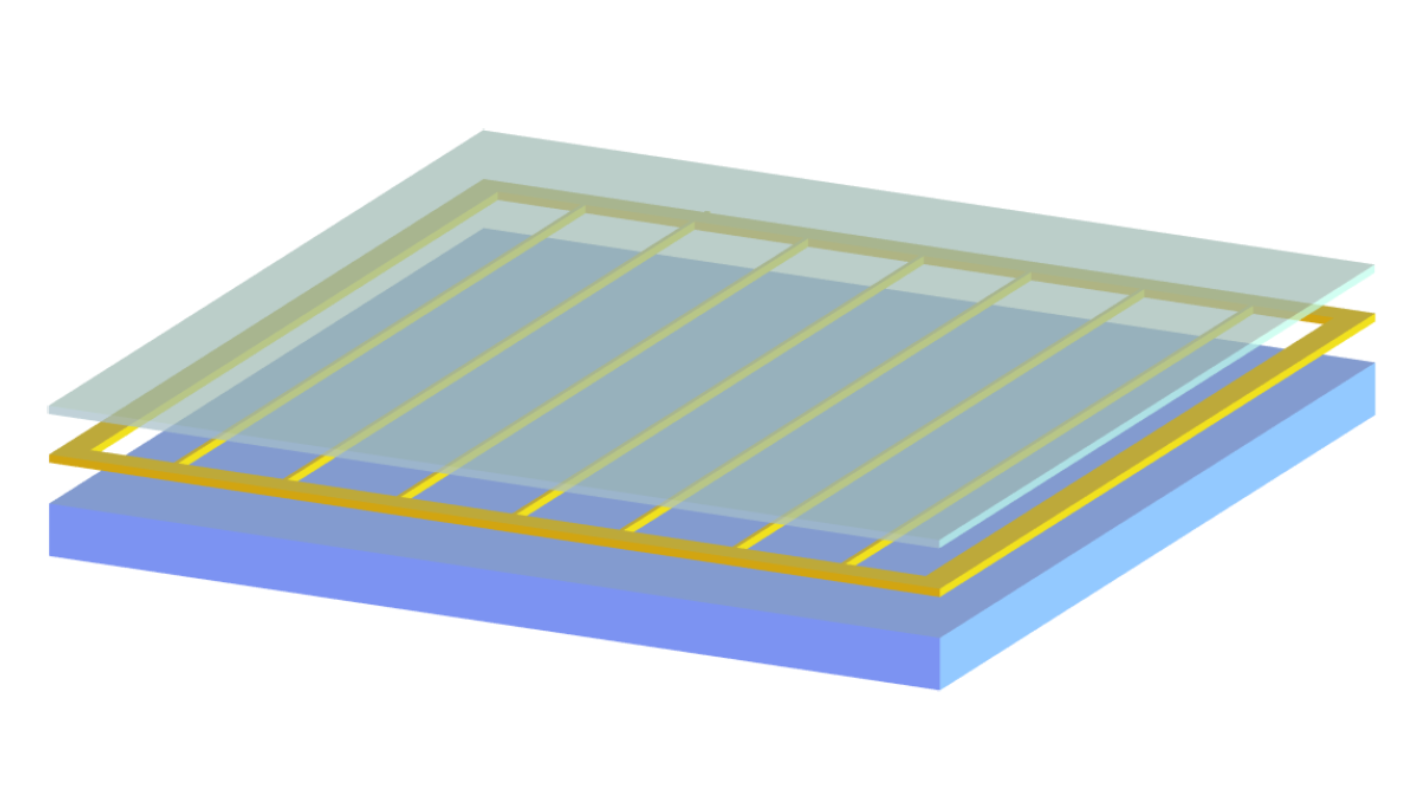High performance transparent conductive oxides (TCOs) can provide a continuous electrically conductive surface when deposited onto a substrate, but over large areas (over a couple centimeters in dimensions), there can be significant voltage drops. This can be overcome by adding conductive busbars (metal lines) to create long-range high conductivity pathways.
Typical devices using high-performance TCOs require busbars to achieve desirable performance. With higher electronic conductivity, there is significant reflection of radio frequency (RF) radiation. The combination of TCO with busbars results in low sheet resistance and is unsuitable for large electrochemical devices, such as in smart windows.
The alternative for TCOs with busbars is metal meshes since they have high conductivity, but the meshes also have drawbacks. They provide a limited electrochemically active surface. They also lose RF transparency as their spacing separation distance approaches the wavelength of incoming electromagnetic radiation. Common metal meshes are square or hexagonal arrays of wires and effectively block all EM radiation above a certain wavelength.
The ability to maintain sufficient conductivity of electrochemical device substrates while maintaining adequate RF transparency would allow for creation of new, useful electrochemical and electrochromic devices.
LLNL researchers have developed a relatively large electrochemically active window with low sheet resistance yet has dramatically increased RF transmission. In-situ measurements show an ~40% increase in reflection at 12GHz when tinting for 10 minutes as compared to the off state. The researchers achieved this through combining novel geometric design of the metal traces with the appropriate grade of TCO material. The orientation of metal traces relative to the incident RF wave determines the reflectivity of the electrode while the overall sheet resistance is determined by TCO layer.
- Electrochemically active substrates with low sheet resistance but increased RF transmission. Novel design can also allow for tuneable RF transmission.
- Specific architectures allow for tuneable RF reflection up to 40% increase in RF reflection when in the fully on state compared to the off state.
- Multiple metal trace designs allow for electrode properties where polarization of the RF transmission is possible.
Dual functionality Smart Windows: can work with potentially all Smart Window products on the market while introducing additional functionality outside of just visible optical response.
Current stage of technology development: TRL ☐ 0-2 ☒ 3-5 ☐ 5-9
LLNL has filed for patent protection on this invention.


